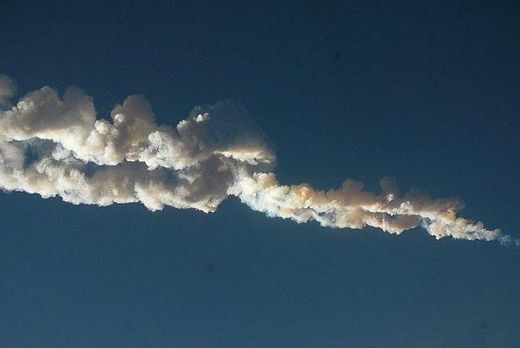They are waking up to reality a day late and a dollar short.
Risk of asteroid impacts may be more common than expected
Rather than expecting an impact every 150 years, researchers believe the risks could be ten times greater.
Researchers warn that the risk of space rocks, like the one that exploded over Russia in February 2013, hitting the Earth is ten times larger than previously estimated.
Using videos from security and dashboard cameras, researchers were able to reconstruct the asteroid and its trajectory through the atmosphere.
Three separate papers out this week agree that the asteroid, which caused an intense flash of blinding light at daybreak on Feb. 15 near the Russian city of Chelyabinsk, was nearly twice as heavy as earlier estimated and had the explosive power of 500,000 tons of TNT.
“Luckily, most of the kinetic energy was absorbed by the atmosphere,” said Jiri Borovicka, an asteroid researcher at the Astronomical Institute near Prague and lead author on a study published in Nature. “A more solid rock that might have blasted closer to the ground would have caused considerably more damage.”
According to Borovicka, the asteroid approached the Earth from a region in the sky that is inaccessible to ground telescopes. The asteroid should have been visible six weeks before the impact, but only during the day, when the sky is too bright to spot objects of its size.
Peter Brown, a planetary scientist at the University of Western Ontario and lead author on a separate paper published in Nature, said that previous models suggested that asteroids like the Chelyabinsk asteroid would hit the earth once every 150 years. But looking at the number of observed impacts over the last 20 years suggests the impact risk could be substantially higher.
Brown suggests that a sensible response to the Chelyabinsk asteroid is scanning the visible sky with asteroid detection and early-warning system like ATLAS, which is currently being developed in Hawaii.



